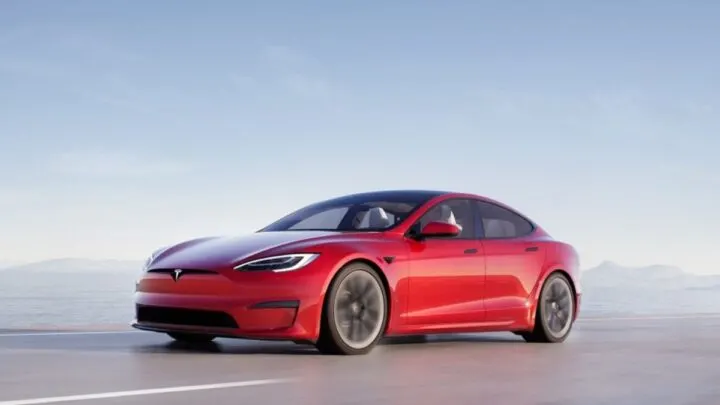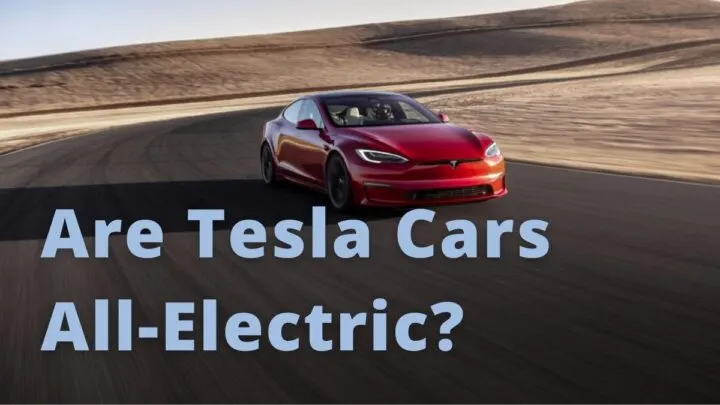Tesla, Inc. is pioneering a global shift towards adopting clean, renewable, and sustainable energy, and one way they’re doing so is with its electric cars.
They’re the first car manufacturer established to produce fully electric vehicles exclusively.
Tesla cars such as the Tesla Model 3, Tesla Model S, the Model Y, and Model X are exclusively electric. They don’t have gas tanks and offer an impressive 220 to 620 miles on a full battery, depending on the model.
Since they don’t have a fuel tank, they are also emission-free, lack fuel lines and fuel pumps, and don’t generate engine heat.
This article explores how Tesla cars work, what happens if you run out of battery charge, and an insight into its lubrication system. Let’s get going.
How Do Tesla Electric Cars Work?
Most people know how fossil fuel-powered cars work, but the workings of electric cars may be foreign to them. Here’s how Tesla electric cars work.
Tesla cars are powered by a lightweight yet powerful induction motor capable of driving the vehicle to speeds of 18,000 revolutions per minute (rpm).
As there’s no internal combustion engine, the car is lighter, faster, and its speed varies as the driver changes the frequency of the power supply.
Additionally, as it’s challenging to store alternating current (AC) power, Teslas uses converters to convert the Supercharger AC to a storable DC (direct current). When on the road, the induction motor uses AC power.
The stored DC power converts to a usable AC with the help of an inverter that also controls the AC power drawn, hence maintaining the car’s speed.
What Happens if Your Tesla Runs Out of Battery?
Driving a Tesla until it runs out of battery is rare, as the car will attempt to avoid running its batteries dry and will give you plenty of warning if you’re running low on charge.
Like your phone, Tesla cars will shut down when it runs out of battery.
If you’re traveling to a destination, your Tesla will automatically gauge your driving, the distance to your destination, and road conditions in order to give you an accurate reading of your battery power.
Your Tesla will inform you on the best move to avoid running out of battery before reaching your destination from the data it collects.
And, if you can’t preserve the battery by driving more conservatively, your car will advise you to go to the nearest Supercharger (even if it’s going back to a previous one) to boost your battery.
If you’re close to your destination, your car will attempt to save on the battery by recommending a good driving speed that doesn’t drain the batteries.
You might even put it in adaptive cruise control/ autopilot to aid you in conserving charge.
Look out for the Tesla battery indicator as it turns from green (full charge) to yellow and eventually red (low charge). It indicates the time and miles you can drive on the remaining charge.
If you ignore these warnings and continue to drive, your car will eventually run out of battery.
On the brighter side, Tesla cars have a 10 to 20 miles reserve charge for emergencies. Try not to worry too much when the vehicle runs out of battery.
However, once you’ve depleted the reserve charge, your car won’t maintain highway speeds and will slow down gradually. It gives you ample time to switch lanes and park your vehicle safely.
After that, your car will shut down, and you’ll tow it with a flatbed tow truck to the nearest Supercharger.

Do Teslas Need Oil Change?
No, but they do have oil in the gearbox. Tesla cars actually don’t need traditional oil changes, spark plug replacements, emission checks, or fuel filter changes.
The oil in the gearbox remains clean and in good condition for extended periods, meaning you won’t need to replace it.
Oil is essential in motor vehicles for lubrication and cooling purposes. For fossil fuel engines, oil provides the necessary lubrication and avoids the wear and tear of engine parts.
Additionally, the oil absorbs engine heat and releases it through the lubrication system. For electric motors, the case is different, as they require a small amount of grease for the bearings within the motor.
Do Electric Cars Need to Warm Up?
Tesla electric cars don’t need to warm up before driving. They use a Battery Management System and Preconditioning and Scheduled Departure features to keep the battery warm and under ideal working conditions.
Warming up in fossil fuel-powered cars is different from heating in electric vehicles. In a diesel or gas-powered vehicles, the friction in the engines generates sufficient heat to warm up your car’s engine, the battery, and the cabin.
It’s different for electric cars as they rely on heating elements to heat the seats, cabin, or steering. These heating elements drain the battery, and it’s better to warm up your car while connected to a charger.
Are There Non-Electric Tesla Cars?
No!
Tesla stated that they have no intention of making non-electric and will never think of doing so in their lifetime.
Conclusion for Tesla’s Cars Being Fully Electric
In addition to being all-electric, Tesla cars have impressive battery ranges and lives.
The batteries can last as long as 300,000 to 500,000 miles, and it will retain as much as 80% of their charge capacity during the same period.
Furthermore, the company is massively investing in setting up Superchargers nationwide, meaning you won’t need to worry about charging your car.
If you’re planning on buying a fully electric car, you can’t go wrong with a Tesla.
